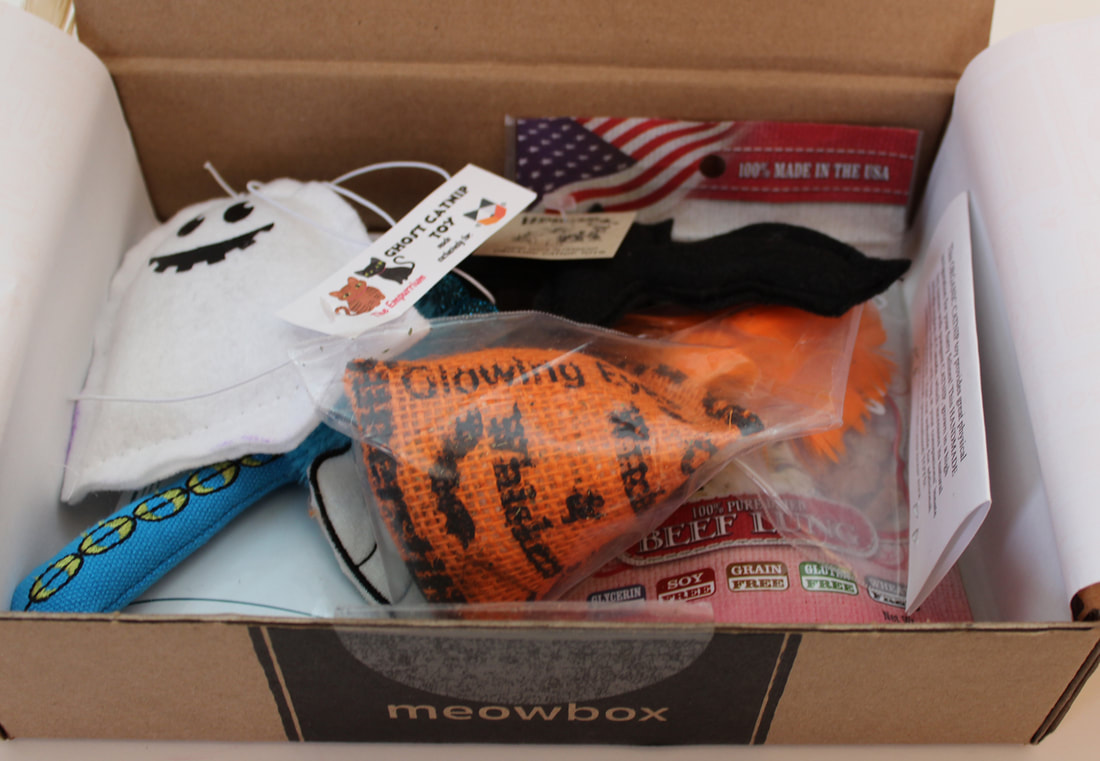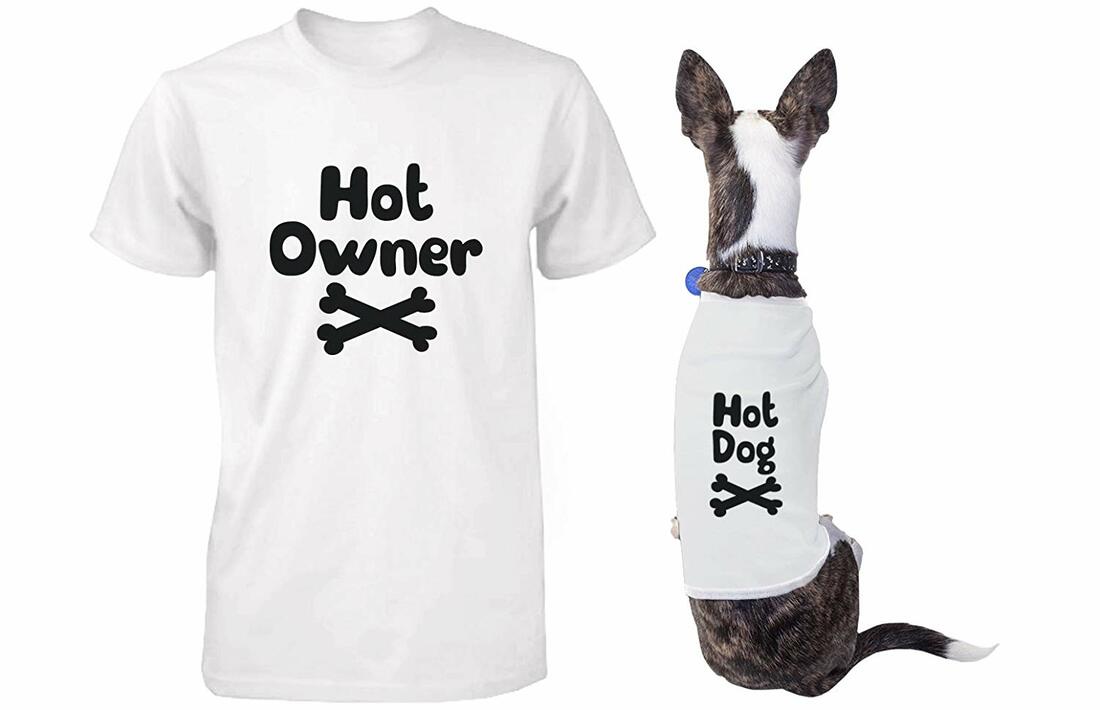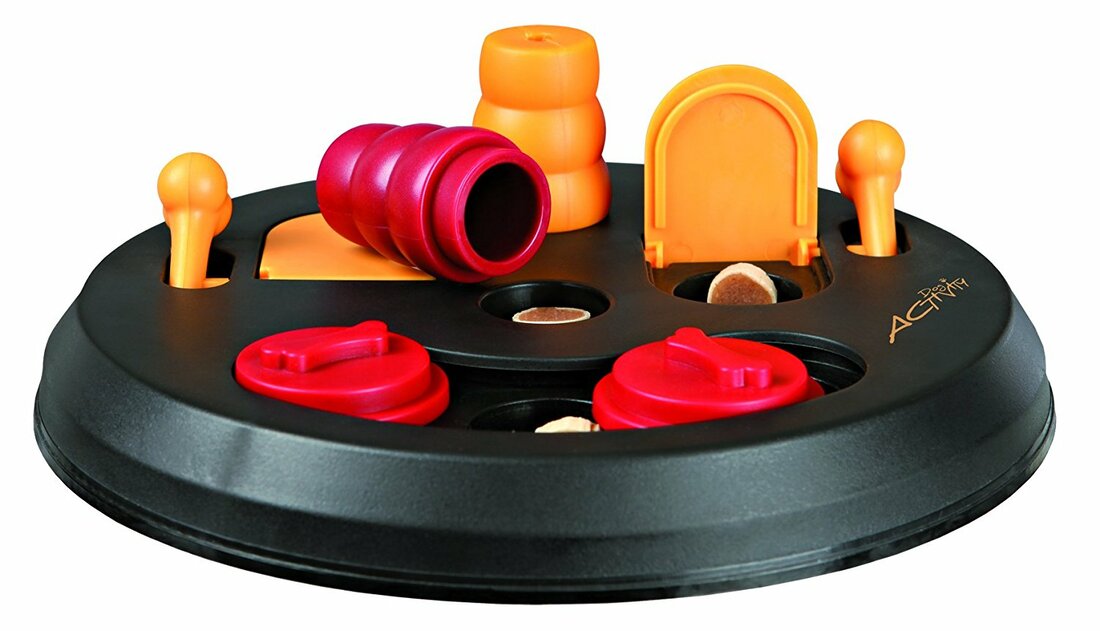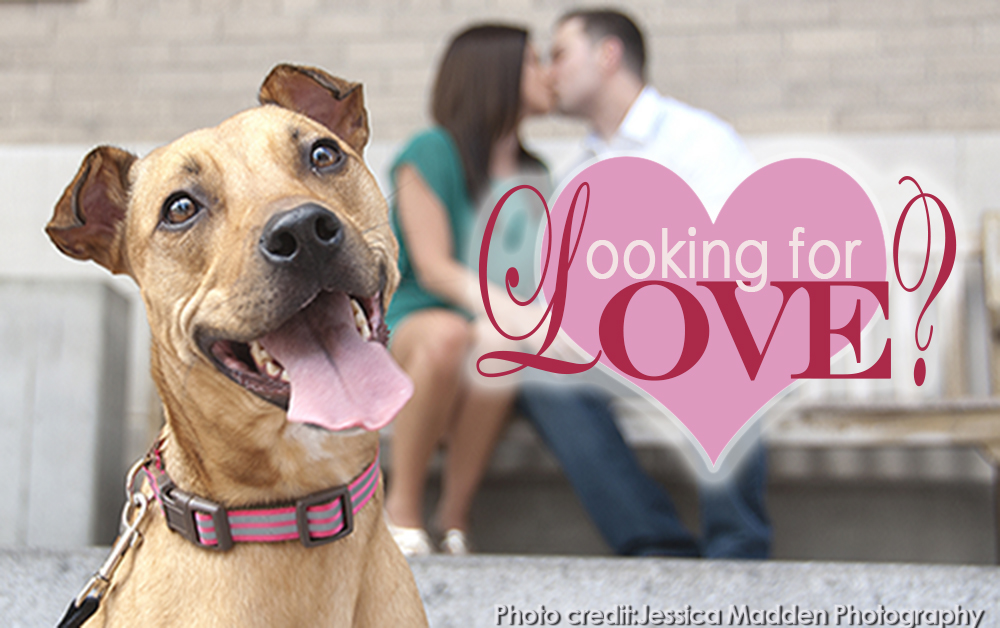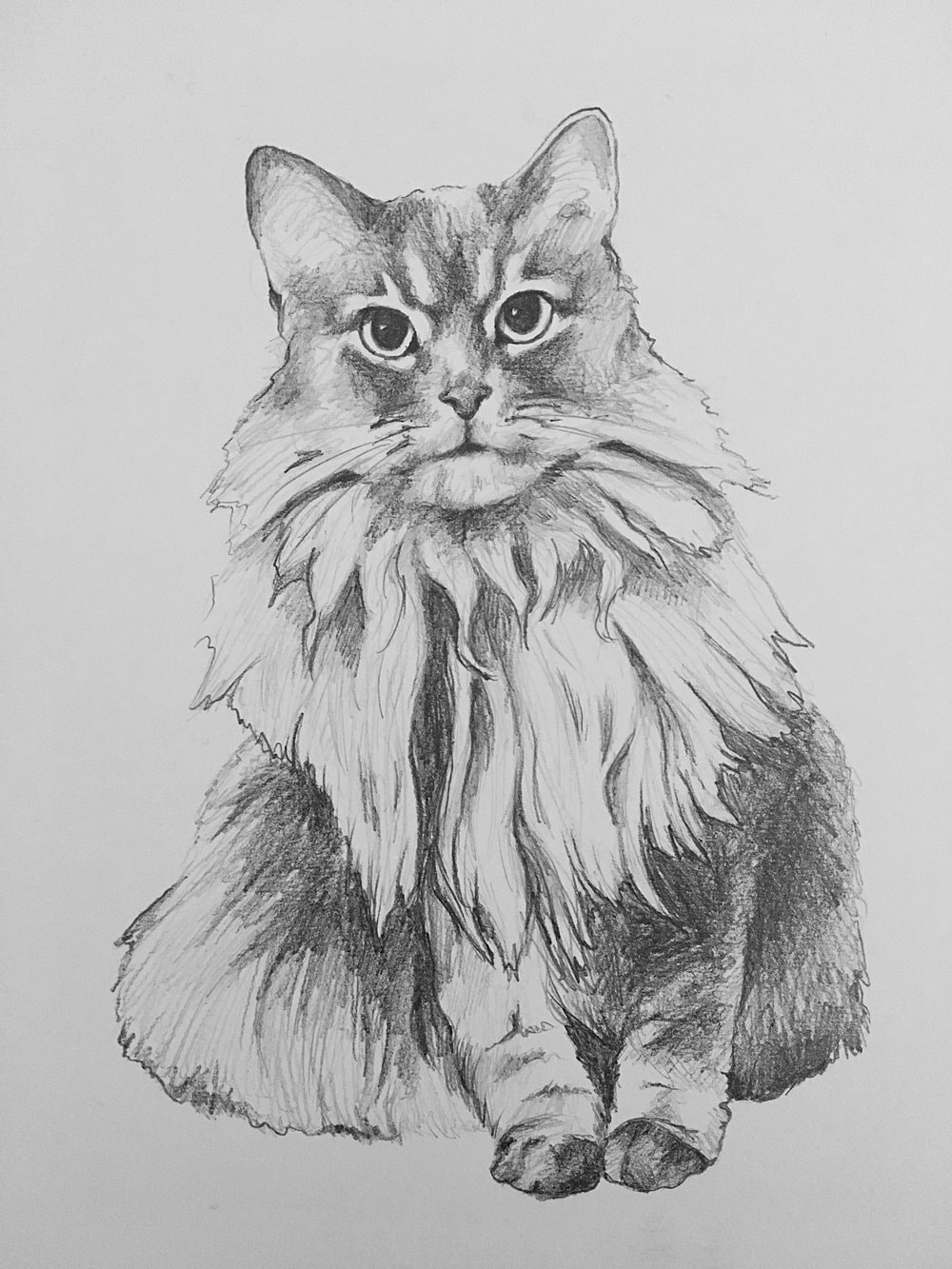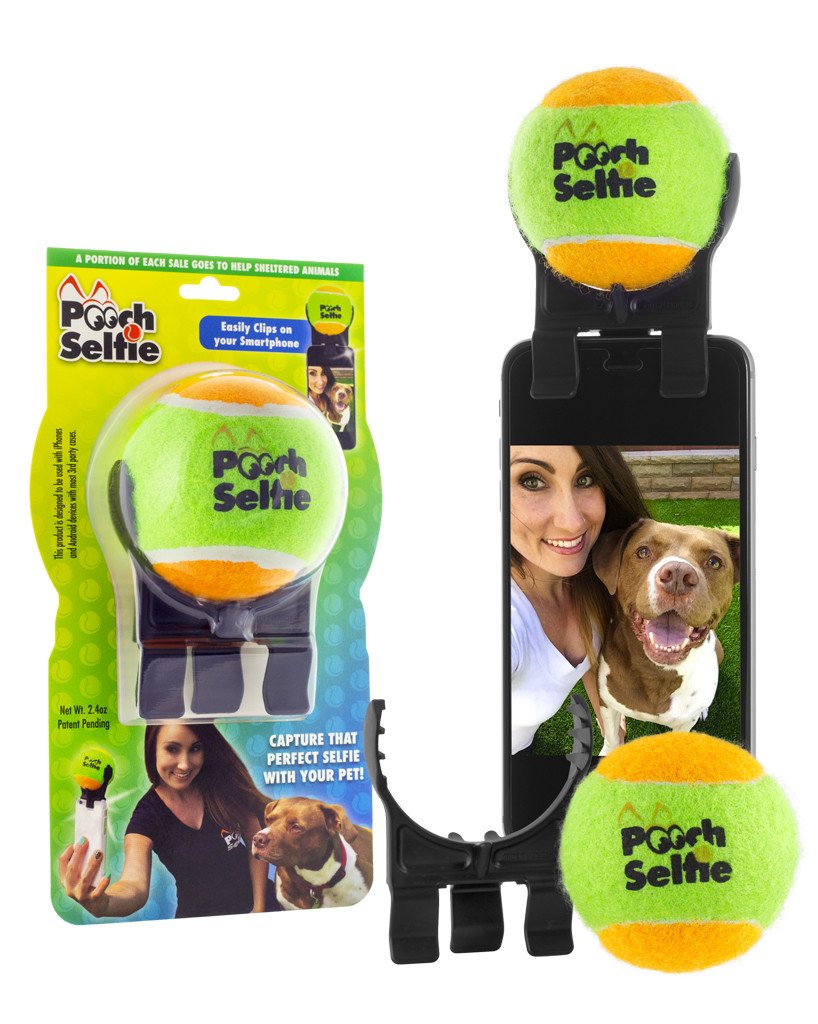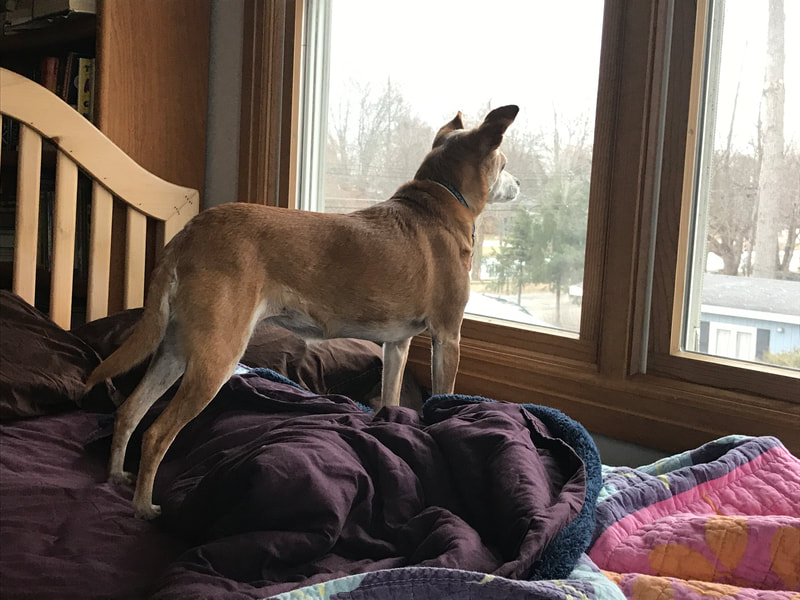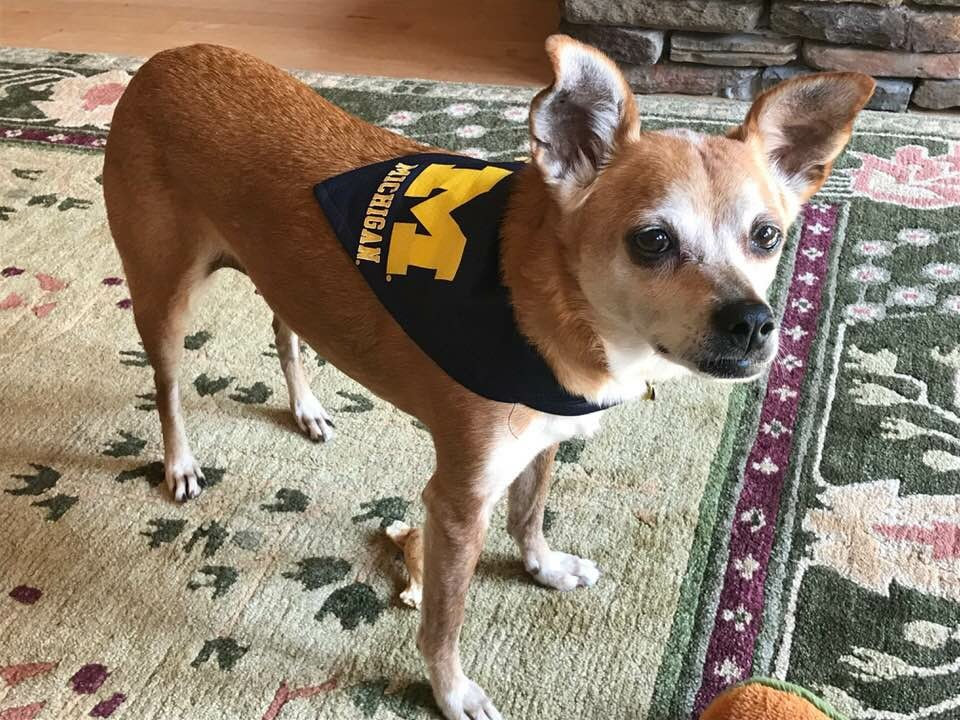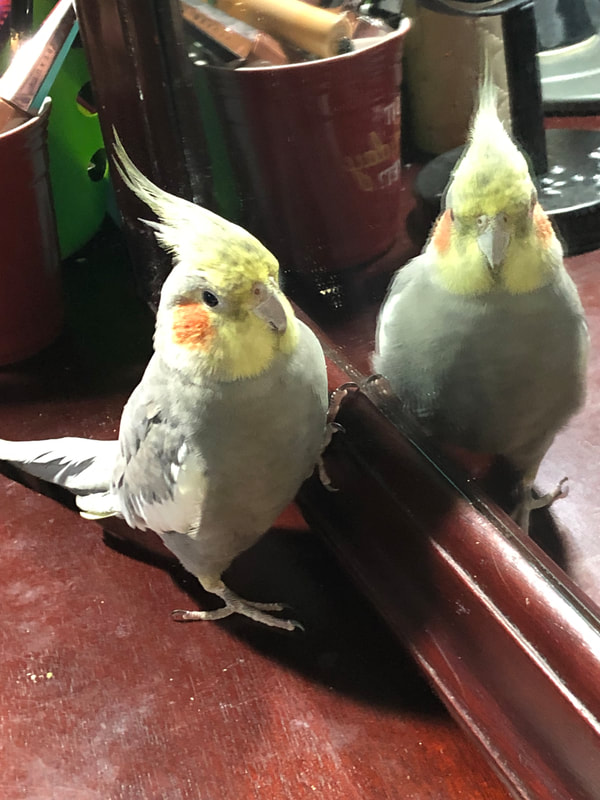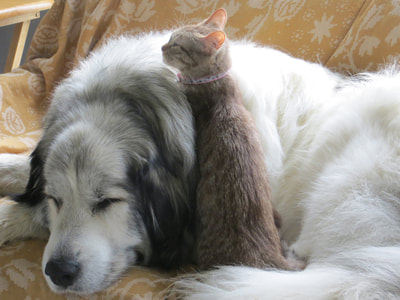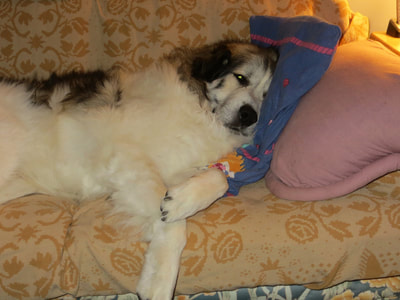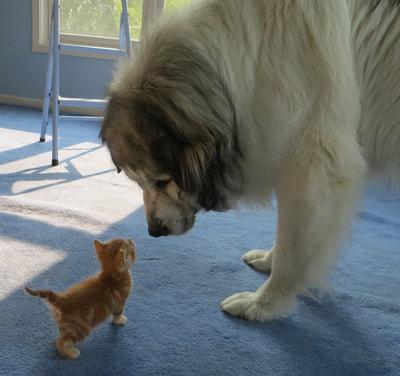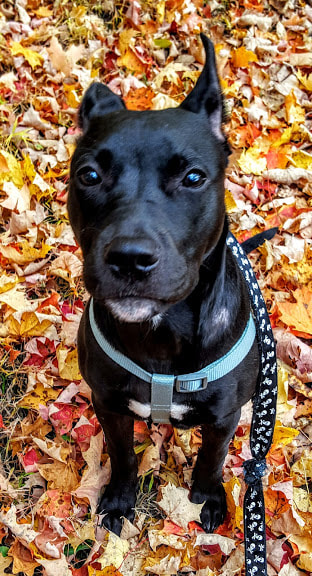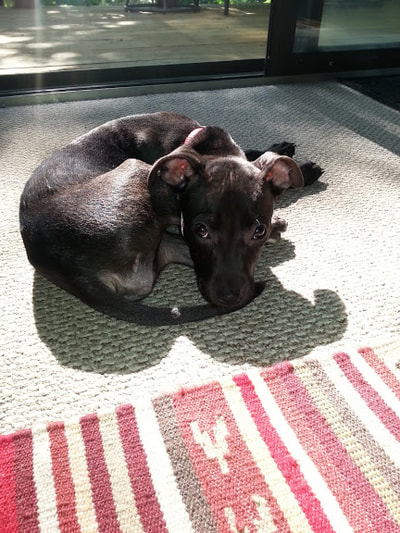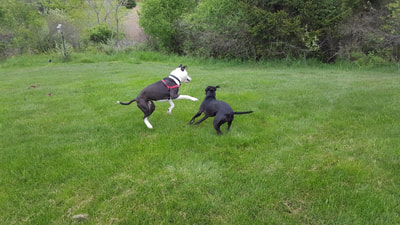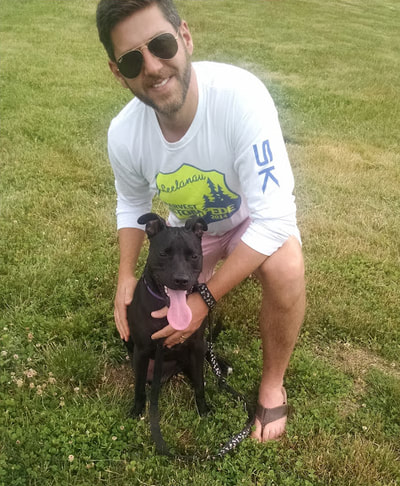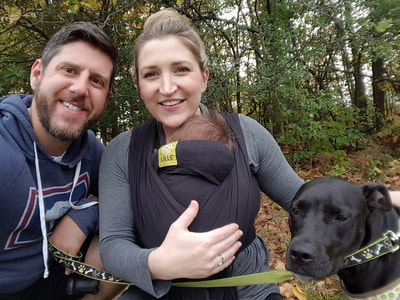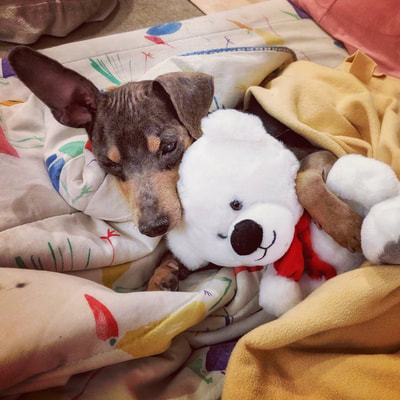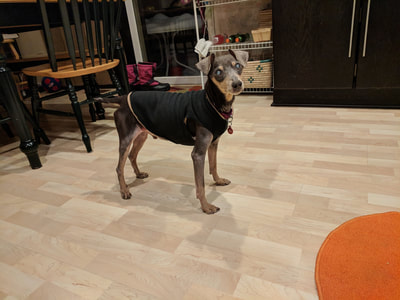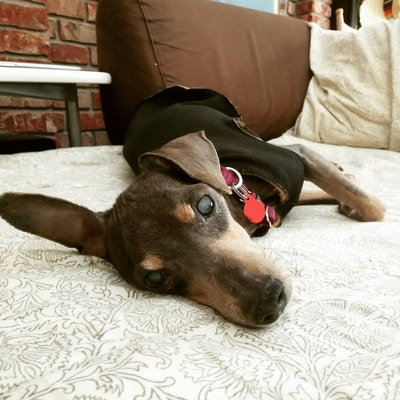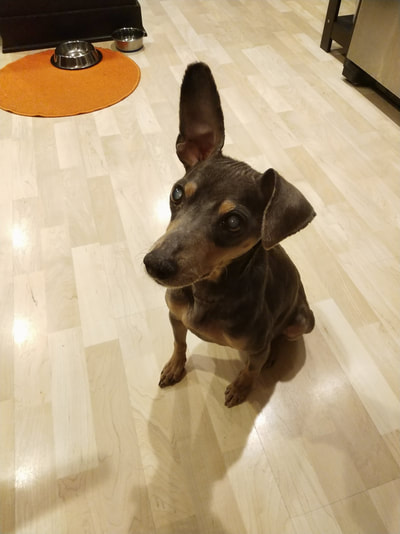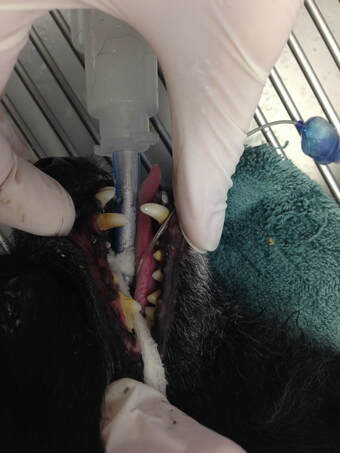 Before dental cleaning. Before dental cleaning. With the passing of the first two weeks of Dental Month, we realize we haven't been totally transparent with you about dental cleanings. No, we aren't saying they aren't beneficial (read about the benefits here), we've just never shared the down and dirty about dental cleanings. And believe us, they are DIRTY! So, here comes the "tooth"; are you ready? The preparation for a dental cleaning can begin days before the actual procedure depending on the age of your pet because we use pre-anesthetic sedatives and inhaled anesthetics. If your pet is over the age of seven, we require blood work to give us an insight into how their body is functioning and to look for any warnings your pet may have trouble processing the anesthesia. It is very rare, but we have determined a dental cleaning to be too risky when lab results were weighed against the benefits. This is also why we recommend doing blood work a few days before surgery, to avoid canceling the surgery the same day and to spare your pet the frustration of missing a meal.  After dental cleaning. After dental cleaning. Oh, right, your pet has to be fasted after midnight before the surgery. This is to prevent aspiration before the tracheal tube is placed and during its removal. After you drop off your pet, they will be given the pre-anesthetic sedative if we aren't doing blood work the same morning (which is available if you aren't able to come in earlier or you decide you'd like to run the lab work during check-in). After they are sedated, we will place a catheter in a front leg for IV fluids (optional for pets under 7-years-old). The IV fluids help to prevent complications by keeping your pet hydrated and regulating their blood pressure while under anesthesia and during recovery. Once they are sedated, we will give an injectable anesthesia and place the tracheal tube. The tube allows us to use less anesthesia because it more effectively delivers the anesthesia/oxygen mix to your pet's lungs, where it enters their bloodstream and gives them one of the best naps they'll ever have. By using less anesthesia, your pet is able to recover more quickly and with less of the "hang-over". During a dental cleaning, the tracheal tube offers another benefit because it has an inflatable cuff to keep it in place. This inflatable cuff prevents water and other fluids from entering the lungs. After the tracheal tube is placed, we can finally get down to business. We use an ultrasonic scaler to clean tartar, plaque, and debris from each tooth. While the doctor is scaling, a technician is monitoring your pet's heart rate and breathing. The scaler uses both vibration and jets of water to remove the gunk without damaging the healthy teeth underneath. During the scaling, the doctor checks each tooth to make sure it is firmly rooted and healthy. If a tooth is loose or unhealthy, it will be removed at this time. Some teeth are decayed or infected at the root and may require a dental specialist to remove. After both sides are scaled and all needed extractions are done, we polish all the remaining teeth. Lastly we rinse their teeth and mouth with a fluoride rinse to get large bits of debris out. Now that those teeth are sparkling, we begin the process of waking them up. As they come out of the anesthesia, we monitor them closely. Once they are sufficiently awake, we deflate the cuff on the tracheal tube and remove it. Then they recover in a warm, cozy kennel under close observation. A dental cleaning requires lighter sedation than other surgeries, so pets usually wake up sooner and have fewer restrictions after the procedure. Phew, we have to say how good it feels to get all this out there. We are really glad we finally took the time to come clean about dental cleanings.
4 Comments
A few days ago we put together a list-a comprehensive list, we think-of gifts for the animal lover in your life. After learning over half of pet owners are planning to buy their furry friends a Valentine's Day gift as well, we thought we'd use our power of list compilation to help. You can check out some of our favorite pet presents below!
The only thing your Valentine will love more is their pet!It should be pretty easy to make a good impression on Valentine's Day. Some flowers, some chocolate. Boom, done! Right? Maybe not if your Valentine is an animal lover with their own pack of pets. Chocolate and certain flowers (or plants) can be toxic to pets, which means you could end up in the dog-house with your cute, albeit generic, gesture of love. Fret not, because we have a list with something to delight any animal lover. See, we don't just provide preventative care for your pets, we're looking out for your relationships, too! Royal Canin Genetic Health Analysis
Pet Portraits
Pooch Selfie
"Pet Owner Home Rules" Metal Sign
Pets Puzzle
Cat Wine Stopper
LornaJanuary being the first month of the year inspired us to pick a dog taking her first trip overseas for Pet of the Month. A common New Year’s resolution is to travel more and Lorna, our January Pet of the Month, is starting right out of the gate in 2019. She’ll be traveling to France to visit one of her owners, Orion.
In July of 2017, Lorna joined Marika and Orion’s family after they found her at the Humane Society of Huron Valley while looking for a furry family member. They knew the second they saw the alert, curious, calm, extremely sweet Chihuahua mix she would be a great addition to their family. She is eager to meet anyone and everyone, and having met her, we can confirm this! She becomes so excited she’ll wiggle her entire body as she madly wags her tail. During her walks, she’s either trying to meet everyone she can or attempting to catch any small critters she comes across. She has achieved “Expert-level” in snake catching, sometimes diving head first into a pile of leaves and emerging with a snake, much to the chagrin of people around her. When she isn’t using her lightning speed, she loves lounging wherever her humans are just keeping an eye on them. Lorna came to City Pets in preparation for her travels with Marika to visit Orion in Annecy, France, after he took a physics post-doctorate research position overseas. To help ensure everything is in order, we recommended coming in for an initial appointment as soon as possible because of the many requirements for international travel. Traveling to some destinations can involve even more testing, including Rabies titer testing, which can take 6-8 weeks for results. There may also be a waiting period of 3-9 months required before travel. Lorna will need one more exam within ten days of travel, a specific EU Health Certificate, and an USDA-endorsed International Health Certificate, which requires an appointment with the USDA in Lansing. After her exam and the appointment at the USDA, Lorna will be able to travel with Marika to see Orion in France. According to Marika, she is quite the adventurer and has loved the road trips she’s taken with her owners but is particularly excited to visit a whole new country! If you are planning to travel with your pet, please call so we can help prepare a general timeline to get them travel-ready! You can also go to the USDA website below to get started. https://www.aphis.usda.gov/aphis/pet-travel LokiAfter a brief hiatus, we are back with the Pet of the Month. And since our winner was given as a gift, it only makes sense for Loki to be awarded December’s Pet of the Month. His owner, Spriha, received Loki as a birthday present earlier this year. He has done quite a bit of growing up in his 9 months and has really found his voice. He loves singing to himself in the mirror and is even learning a few theme songs right now. He is definitely a “people bird” and loves to be around people, though he is a little wary of loud strangers. Usually, he can overcome his apprehension if scratches are offered.
He starts every morning by displaying his heart wings as he comes out of the cage and singing his people a tune. He then takes his breakfast on the window sill where “he can hear the hawks yelling” and he “yells back” unless a bird comes too close to the window. If that happens, he freaks out! Spriha brought Loki to see us because she was concerned he may have had an infection. After an exam and diagnostic testing, he was given a clean bill of health. Spriha reports he is doing well at home despite his preference to live in a mess. At least, she believes he prefers to live in a mess because he begins to yell whenever she brings out the vacuum cleaner. When he isn’t yelling at other birds and the vacuum cleaner, he is a very content bird and she reports “he is a blessing to have.” We think he’s a real gift, too, and are glad to have him as our December Pet of the Month. BrewskiWe are excited to kick off summer with our June Pet of the Month, Brewski! We think he’s a rock-solid choice and we’re sure you’ll agree after reading his story. The almost three-year-old Chesapeake Bay Retriever joined Michael and Kat’s family in October of 2015. They had no idea at the time he would break one-hundred pounds. He still thinks of himself as a lap dog; a really, really big lap dog. Aside from laps, Brewski loves the people attached to those laps. He also loves food-all the food-but especially cauliflower. One of this active and energetic dog’s favorite things is water. Swimming, hoses, sprinklers, if there’s water, Brewski’s drawn to it. Normally, he sticks to warmer days, logging ten-plus hour days swimming, diving for rocks, and chasing ducks, but he once went swimming on a 37 degree January day in 2017. Despite his imperviousness to cold, Brewski is sensitive to people and notices changes around the house. The biggest change was the addition of Bianca, Kat and Michael’s newborn daughter. Brewski has taken to her and is very affectionate and caring towards his human sister. Since she’s come home, he has been looking out for her, especially when squirrels get in the backyard. Brewski does not like squirrels in the backyard. Recently, Kat brought Brewski to see us because he was not feeling like himself. He had vomited twice in 12 hours, was very lethargic, and not interested in food. This was very concerning because, as we mentioned earlier, he loves all food. During his exam, Dr. Weinrick became very concerned about a foreign body in his GI tract so we took two radiographs of his abdomen. Upon examination of the radiographs, she found a very peculiar and troubling object in his intestines. The next step was to do a barium series to ensure the object was in the intestines and to determine if anything was able to move around it. After we gave him the barium, he vomited it up within 30 minutes. This was not a good sign, but he was stable, so we set up a foreign body surgery for the next day and sent him home to rest with instructions to get him to an emergency hospital if his condition worsened before his surgery. The next morning, Dr. Weinrick wanted one more radiograph before surgery to see if the object had moved. As we watched the image develop on the screen, we were all surprised to see the object was gone. Kat had reported he was feeling a little better that morning and had tried to pass stool the night before, but wasn’t able to produce anything. With his improved demeanor and apparent desire to eat, we fed him a small amount of bland prescription food and monitored him closely. When he kept it down and basically begged for more, we may have sent up a little cheer. After Dr. Weinrick relayed the great news to Michael and Kat, they sent us an email a short while later with a photo attachment. Turns out, Brewski did have a bowel movement the night before and they were able to find the offending foreign body. He had swallowed a rock. A rock! He continued to keep food down the rest of the morning and went home without needing surgery. It was the best result for one of the best dogs. That’s why we think Brewski is a rock-solid choice for Pet of the Month. HarleyOur May Pet of the Month is a living embodiment of the classic literary institution of a “gentle giant”. Please sit back and allow us to tell you a story about Harley, the Great Pyrenees.
Harley was adopted in 2013 from the Michigan Great Pyrenees Rescue. When his new parents, Anne and Bruce attempted to load him into their SUV, he refused to jump into the back. It took both of them to lift his 115-pound frame into the vehicle. Harley has since been taught to put his front feet on the back and one of them can lift the rest of him. Anne and Bruce chose a Great Pyrenees because they are known for being friendly to small animals and it is because of this trait we have deemed him a “gentle giant”. Bruce and Anne have provided photographic evidence of his gentle demeanor as he interacts with the family’s six cats, one rabbit, and their foster kittens. They were also warned Great Pyrenees have a tendency to wander. Despite their fenced yard, they have found Harley likes to “walkabout” their rural neighborhood. His first stop is the muddy wetland and burrs behind their house and then off to check out a nearby pond and surrounding fields. Eventually, after an hour or so, he makes his way to the front porch to be lured inside with a treat. As a large breed, Harley was at a greater risk for hip and mobility issues. In December 2017, Anne noticed he was moving more stiffly and seemed to be uncomfortable when she was petting him. After a thorough exam and discussion, Dr. Weinrick sent Harley home with medications to help with inflammation and pain. It appeared to work and he was doing well until March of this year. He was again having mobility issues. This time Dr. Weinrick recommended a long-term course. After baseline blood work, he was put onto the lowest effective dose of carprofen and has been able to resume his neighborhood “walkabout”. Harley continues to enjoy his furry roommates, the snow, and lying in his favorite spot, on the sofa, snoring. His discomfort and stiffness appear to be controlled on carprofen and joint supplements. He still refuses to jump into the back of Bruce and Anne’s Escape and they definitely weren’t able to help with his distaste for temperatures over 70 degrees. All things considered, though, we think this is a story that warrants a storybook ending: “And they lived happily ever after.” RuthieIt is April, so it’s time to announce our next Pet of the Month! Our pet of the month is very appropriate because this time of year was particularly hard before her allergies were controlled. It is with great honor we announce Ruthie as our Pet of the Month!
Ruthie was named after Supreme Court Justice Ruth Bader Ginsberg because of her black coat and dash of white down her throat when she was adopted in the summer of 2015. The newlyweds, Nate and Caitlin, were on the hunt for the perfect dog to add to their growing family. As a teacher, Nate had summers off and he spent every day at the Humane Society of Huron Valley walking dogs, looking for a match. During one of his visits, he met a tiny black furball who had recently arrived from Ohio. He picked up the very sick, 8 week old puppy and knew immediately she was the one when she snuggled right up in his arms. Nate and Caitlin report she has "been a love bug ever since!" Ruthie first came to City Pets Vet Clinic in 2016 because she was experiencing one of her worst allergic reactions Caitlin and Nate had ever seen. Ruthie had suffered from allergies since she was a puppy but this time her fur was patchy and Benadryl was no longer helping. After her exam, Dr. Hui recommended Apoquel and steroids to get the symptoms under control and antibiotics to treat a skin infection. The medications helped to suppress her symptoms and she started to feel better but as soon as the course of medication ended, the scratching started again. It was time to try a diet trial and they were all in. Nate and Caitlin switched her food to a limited ingredient diet and eliminated all other foods. They began to see changes but Ruthie would still have flare ups when the seasons changed. At this point, Dr. Weinrick was concerned about seasonal allergies on top of her food allergies. Ruthie was given a cytopoint injection and now both of allergies appear to be under control with only an occasional flare up. With her allergies managed by her new diet and the diligence of her pet parents, Ruthie is able to chase frisbees, cuddle, and play with her friends at Lucky Puppy and City Pets without itching all the time. Ruthie is obsessed with her Grandma and as of September is the best big sister to the family's new (human) addition. Nate and Caitlin's only real complaint is how hard it is to capture her toothy smile and wiggly butt on camera. Smokey After a long hiatus, Pet of the Month has returned with an old dog full of new tricks. Allow us to introduce you to March’s Pet of the Month: Smokey An!
Smokey is a very sweet, 14 year-old miniature pinscher mix. He experienced his own version of a Christmas miracle when his new family decided to adopt him last year in early December. At the time of his adoption, he had untreated diabetes and mature cataracts rendering him almost completely blind. Oh, did we mention he is the An family’s first dog? Despite his disabilities, he still enjoys long walks-his current record is four miles-around his neighborhood. He also doesn’t allow them to impede him from hopping onto the sofa to nap or “looking” out of the car window. It seems he has become a creature of comfort in his new home as he loves warm baths, ripping the stuffing out of toys, and what his family calls the snack lifestyle, while despising the rain, peanut butter, and bananas. And like any senior, he loves to bark at the neighborhood kids, probably to get off his lawn. Smokey is a senior adoption success story and while he doesn’t appear to be an ideal first dog, he and the An family see things a bit differently. GeorgeWe've been anxious to introduce you to our June Pet of the Month, George! When Deb and Steve went to the Humane Society of Huron Valley, after much urging by their grandchildren, they weren't looking for a puppy nor a hound, but a 12 week-old, 14 lb Treeing Walker Coonhound named George stole their hearts. George was sweet, playful, and kid-friendly at home, it wasn't until the family's first puppy obedience class they realized "there was something a little different about George." As the family grew more excited to "start the lessons where all the secrets to having a well-behaved dog would be revealed," they had no idea what trials awaited them. Upon seeing the other dogs in the class, George became over-excited (though according to Deb and Steve, this may be a gross understatement) and became hyper-focused. He continued to bark at the other dogs, while they tried every treat or trick they could to distract him. While Steve and Deb waved cheese and hot dogs in front of him, he strained against his leash to play with his classmates. Recall seemed impossible because while his classmates would return to their owners, George "pin-balled" from classmate to classmate, ignoring his owners' increasingly embarrassed calls. There was little else they could do, but leave the class after four brutal sessions. At 6-months old, George was relentless to gain access to other dogs and critters when he spotted them. He would howl, bark, and jump, whatever was necessary to reach them. His obsessive nature eventually led to his tail becoming a focal point for his stimulation. As his focus intensified, any kind of anxiety or excitement would set George to chasing his tail. With each rotation, he would bark and this could go on for long periods every day. George seemed miserable and his owners can't even describe the agony of watching the puppy that stole their hearts suffer with his obsessive behavior. In November of 2014, Deb brought George to see Dr. Hui. While medical and physical causes were being ruled out, George began to circle in the exam room. It appeared it was behavioral and he was started on a medication to help control his anxiety. As is the case with many anti-anxiety medications, it took some time to get a good idea if it was helping and, unfortunately, for George the first medication wasn't helping much. After many conversations and a brief weaning period, George started on Prozac. After a few weeks, it appeared to be working well enough to help him start training, a key part, along with exercise, to controlling his anxiety and obsessive nature. Deb and Steve found a private trainer to help identify when the spinning was about to start and how to get his attention. They began to work with a different trainer to help with leash walking and intermittent spinning. Deb and Steve adjusted and "learned to put George on a leash indoors when he was anxious, give him clear direction when he seems uncertain, and make sure he gets plenty of exercise." George was nearly two years old and was eating better, he knew several commands, and was more manageable. George's experience is not unique when it comes to anxiety in pets. It can take weeks, sometimes months, to find the right combination of medication, training, and exercise to alleviate enough anxiety for a pet to become comfortable. Behavioral cues can exhibit in many ways, if you have concerns, please contact the clinic. George's story highlights another important aspect of raising a healthy dog: puppy classes. They can reveal early warning signals if your pup has anxieties about other dogs or people. If nothing else, they offer an opportunity to form positive associations with meeting strangers and new experiences. A year later, George still hasn't lost his intensity, but Deb, Steve, and George's persistence has paid off. He is much more relaxed and confident, even winning a few photo contests with his "movie-star" good looks and improved obedience. He takes all the attention in stride and is just like any other dog now: "show him a bike trail, bunny tail, or plump pillow at the end of the day, and he's the happiest of dogs." |
Archives
April 2021
Categories |


